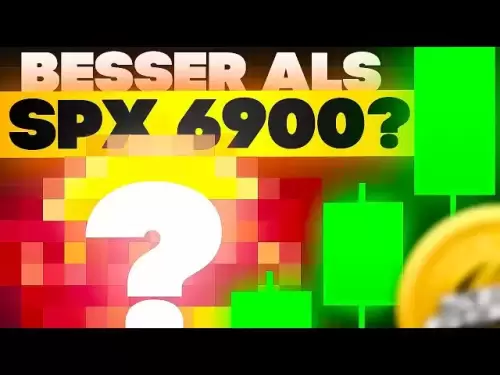-
 Bitcoin
Bitcoin $109,172.8137
0.38% -
 Ethereum
Ethereum $2,658.3912
1.88% -
 Tether USDt
Tether USDt $1.0000
0.00% -
 XRP
XRP $2.3797
3.33% -
 BNB
BNB $662.4084
0.26% -
 Solana
Solana $153.4873
1.09% -
 USDC
USDC $0.9999
-0.03% -
 TRON
TRON $0.2892
1.08% -
 Dogecoin
Dogecoin $0.1727
0.88% -
 Cardano
Cardano $0.6071
3.19% -
 Hyperliquid
Hyperliquid $39.6726
3.01% -
 Sui
Sui $2.9490
0.91% -
 Bitcoin Cash
Bitcoin Cash $504.1242
0.19% -
 Chainlink
Chainlink $13.9579
1.40% -
 Stellar
Stellar $0.2894
12.13% -
 UNUS SED LEO
UNUS SED LEO $9.0366
-0.42% -
 Avalanche
Avalanche $18.5386
1.26% -
 Hedera
Hedera $0.1698
5.36% -
 Shiba Inu
Shiba Inu $0.0...01211
1.76% -
 Toncoin
Toncoin $2.8140
1.36% -
 Litecoin
Litecoin $88.5278
1.45% -
 Monero
Monero $318.9246
1.63% -
 Polkadot
Polkadot $3.5204
2.37% -
 Dai
Dai $1.0000
0.00% -
 Ethena USDe
Ethena USDe $1.0008
0.07% -
 Uniswap
Uniswap $8.1741
5.45% -
 Bitget Token
Bitget Token $4.3516
0.94% -
 Aave
Aave $296.0756
1.87% -
 Pepe
Pepe $0.0...01026
0.49% -
 Pi
Pi $0.4619
0.07%
How is a hard fork upgrade in a blockchain performed?
A hard fork upgrade in a blockchain involves preparatory planning, development, implementation, and post-fork support to ensure a smooth transition for all network participants.
Apr 13, 2025 at 02:01 am
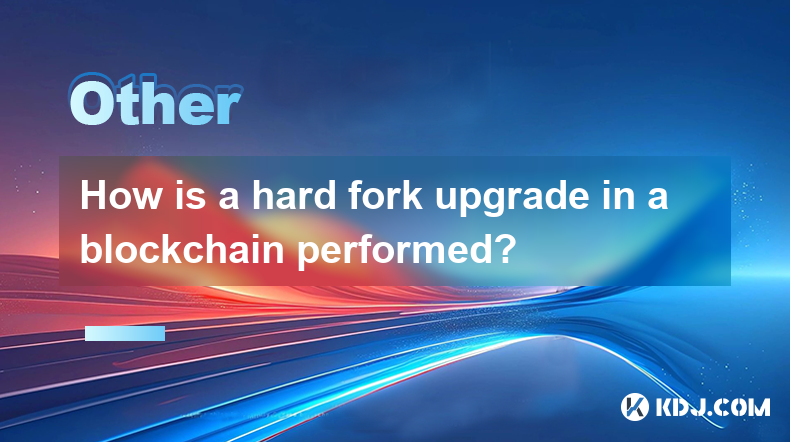
A hard fork upgrade in a blockchain is a significant event that fundamentally changes the protocol of the blockchain. This type of upgrade requires all nodes and users to upgrade to the new version of the software to continue participating in the network. In this article, we will explore the detailed process of how a hard fork upgrade is performed in a blockchain, including the planning, development, and implementation stages.
Preparatory Phase
The process of a hard fork upgrade begins with the preparatory phase. This phase is crucial as it sets the groundwork for the entire upgrade. During this phase, the development team and key stakeholders identify the need for a hard fork. This could be due to the need to implement new features, fix critical bugs, or address security vulnerabilities.
In the preparatory phase, the team conducts extensive research and analysis to determine the feasibility of the proposed changes. They also engage with the community to gather feedback and ensure that the proposed changes align with the community's vision for the blockchain. This phase can take several months, as it involves detailed planning and coordination among various parties.
Development Phase
Once the preparatory phase is complete, the development phase begins. This is where the actual coding and testing of the new protocol take place. The development team works on implementing the proposed changes, ensuring that they are thoroughly tested and validated.
During the development phase, the team creates a new version of the blockchain software that incorporates the hard fork changes. This new version is then subjected to rigorous testing, including unit tests, integration tests, and stress tests, to ensure that it functions as intended and does not introduce new vulnerabilities.
The development phase also involves creating detailed documentation and guides for users and node operators to help them understand the changes and prepare for the upgrade. This documentation is crucial for ensuring a smooth transition during the hard fork.
Announcement and Communication
Effective announcement and communication are vital for the success of a hard fork upgrade. The development team and key stakeholders must clearly communicate the details of the hard fork to the community well in advance. This includes the date and time of the hard fork, the changes being implemented, and the steps users need to take to upgrade.
The announcement is typically made through various channels, such as the official website, social media, and community forums. The team also engages with the community through Q&A sessions, webinars, and other interactive events to address any concerns and provide additional information.
Implementation Phase
The implementation phase is when the hard fork actually takes place. On the scheduled date and time, the new version of the blockchain software is released, and nodes begin to upgrade to the new protocol. This phase is critical, as any issues during the implementation can lead to network disruptions or even a split in the blockchain.
During the implementation phase, the development team closely monitors the network to ensure that the hard fork is executed smoothly. They also provide support to users and node operators who may encounter issues during the upgrade process. This phase can be stressful, as it requires quick problem-solving and effective communication to address any unforeseen challenges.
Post-Fork Monitoring and Support
After the hard fork is implemented, the post-fork monitoring and support phase begins. This phase is essential for ensuring the stability and security of the new blockchain protocol. The development team continues to monitor the network for any issues or anomalies and provides ongoing support to users and node operators.
During the post-fork monitoring and support phase, the team also collects feedback from the community to identify any areas that may need further improvement. This feedback is used to refine the new protocol and address any lingering issues. The team may also release additional updates or patches to fix any bugs or vulnerabilities that are discovered after the hard fork.
User and Node Operator Actions
For users and node operators, the hard fork upgrade involves several key actions. Here are the steps they need to take to ensure a smooth transition:
- Backup Data: Before the hard fork, users and node operators should back up their data to prevent any loss in case of issues during the upgrade.
- Download New Software: On the scheduled date, users and node operators need to download the new version of the blockchain software that includes the hard fork changes.
- Upgrade Software: They must then upgrade their software to the new version. This typically involves stopping the old version, installing the new version, and restarting the node.
- Verify Upgrade: After upgrading, users and node operators should verify that the upgrade was successful and that they are now operating on the new protocol.
- Monitor Network: They should continue to monitor the network for any issues and report any problems to the development team.
Frequently Asked Questions
Q: What happens if a user or node operator does not upgrade during a hard fork?
A: If a user or node operator does not upgrade during a hard fork, they will no longer be able to participate in the new blockchain network. They will be stuck on the old version of the blockchain, which may become obsolete or even cease to exist if the majority of the network upgrades.
Q: Can a hard fork be reversed?
A: Once a hard fork is implemented, it is generally not possible to reverse it. The changes made during a hard fork are permanent and become part of the new blockchain protocol. However, in some cases, a subsequent hard fork could be used to revert certain changes if the community agrees.
Q: How long does a hard fork upgrade typically take?
A: The duration of a hard fork upgrade can vary depending on the complexity of the changes and the size of the network. The preparatory and development phases can take several months, while the implementation phase typically occurs over a few hours or days. The post-fork monitoring and support phase can last for weeks or even months as the network stabilizes.
Q: What are the risks associated with a hard fork upgrade?
A: Hard fork upgrades carry several risks, including the potential for network disruptions, security vulnerabilities, and community division. If not executed properly, a hard fork can lead to a split in the blockchain, resulting in two separate networks. Additionally, there is always the risk that some users or node operators may not upgrade, leading to a loss of network consensus.
Disclaimer:info@kdj.com
The information provided is not trading advice. kdj.com does not assume any responsibility for any investments made based on the information provided in this article. Cryptocurrencies are highly volatile and it is highly recommended that you invest with caution after thorough research!
If you believe that the content used on this website infringes your copyright, please contact us immediately (info@kdj.com) and we will delete it promptly.
- NEXBRIDGE, NEXPLACE, and the Bitcoin Ecosystem: Building a New Financial Frontier
- 2025-07-09 23:10:13
- MEXC Launchpad & PUMP Token: Grab a 40% Discount?
- 2025-07-09 22:50:12
- Trade System Revolution: How XDC and the End of Faxes Are Reshaping Finance
- 2025-07-09 23:10:13
- Ripple, CLARITY Act, and the XRP Case: A New York Minute on Crypto Regulation
- 2025-07-09 23:50:12
- No Rs 50 Coin? Delhi HC Hears Why India Prefers Banknotes
- 2025-07-09 23:15:11
- No Rs 50 Coin? Delhi HC Hears Why Banknotes Reign Supreme
- 2025-07-09 23:50:12
Related knowledge
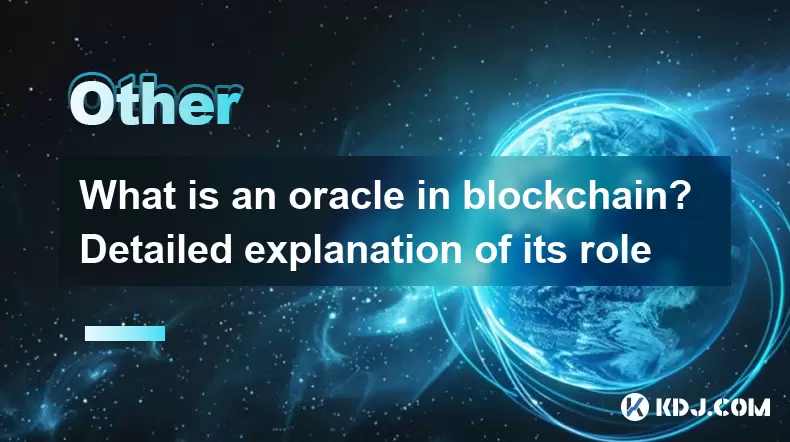
What is an oracle in blockchain? Detailed explanation of its role
Jun 21,2025 at 06:14am
<h3>Understanding the Concept of an Oracle in Blockchain</h3><p>In the realm of blockchain technology, an oracle is a trusted third-...
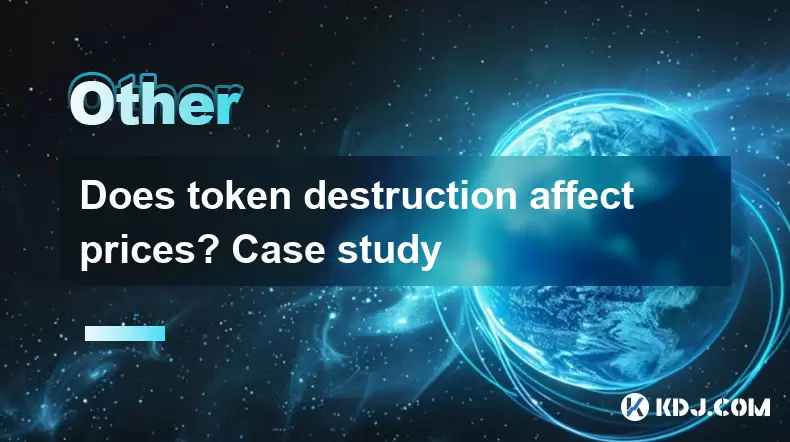
Does token destruction affect prices? Case study
Jun 22,2025 at 02:50am
<h3>Understanding Token Destruction</h3><p>Token destruction, commonly referred to as token burning, is a process where a portion of...
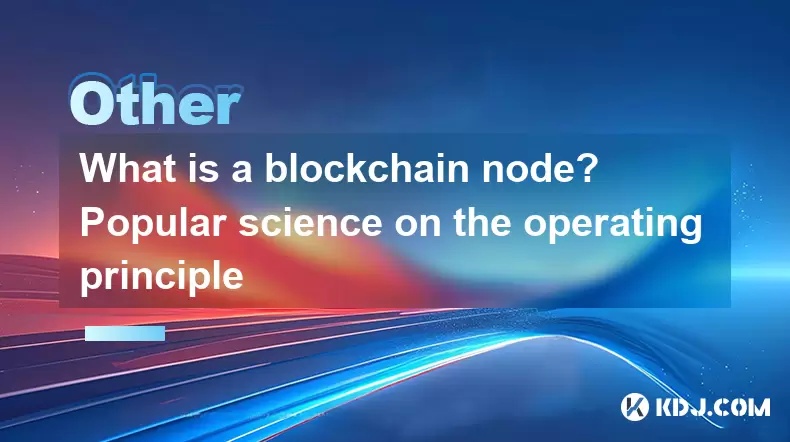
What is a blockchain node? Popular science on the operating principle
Jun 22,2025 at 11:00pm
<h3>Understanding the Basics of a Blockchain Node</h3><p>A blockchain node is essentially a computer connected to a blockchain netwo...
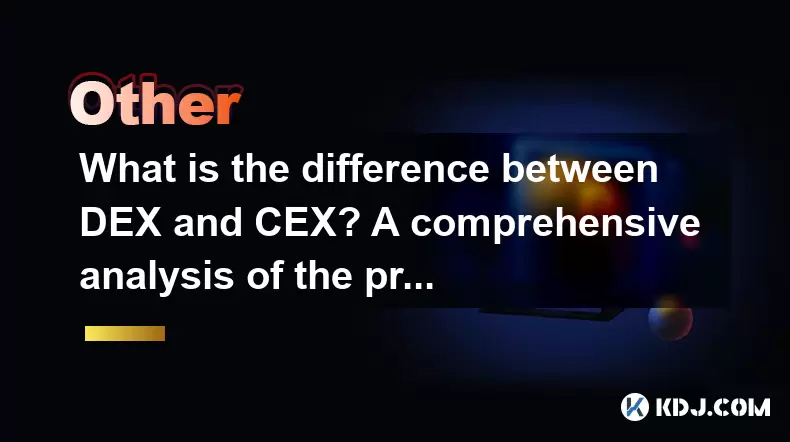
What is the difference between DEX and CEX? A comprehensive analysis of the pros and cons
Jun 24,2025 at 09:42am
<h3>What is a DEX (Decentralized Exchange)?</h3><p>A DEX, or Decentralized Exchange, operates without a central authority. Unlike tr...
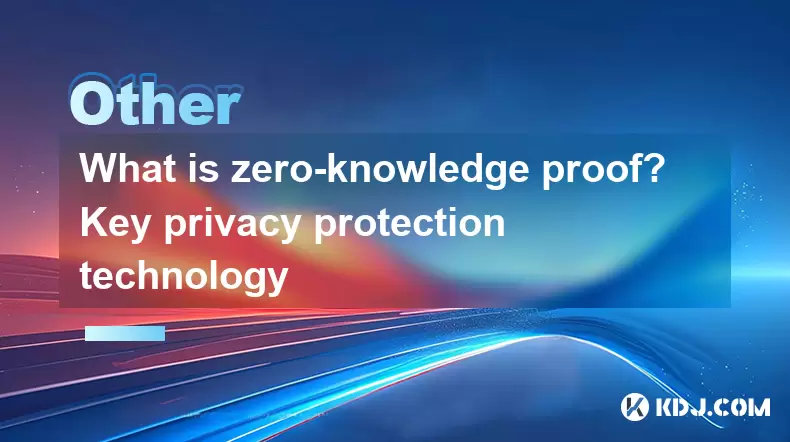
What is zero-knowledge proof? Key privacy protection technology
Jun 22,2025 at 07:29pm
<h3>Understanding Zero-Knowledge Proof</h3><p>Zero-knowledge proof (ZKP) is a cryptographic method that allows one party to prove to...
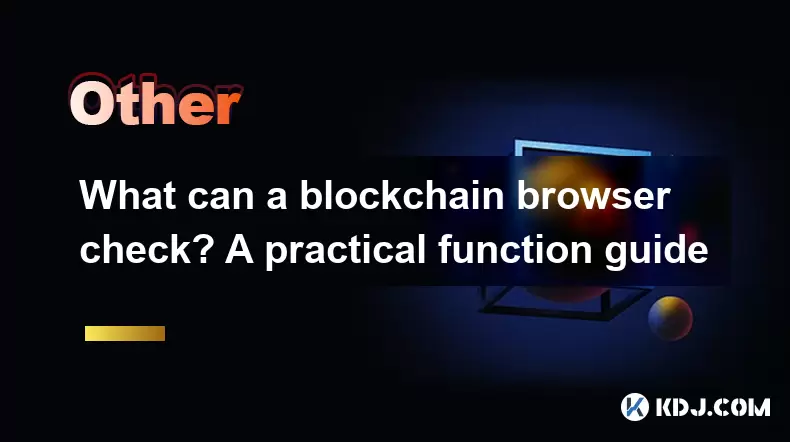
What can a blockchain browser check? A practical function guide
Jun 20,2025 at 07:35pm
<h3>Understanding the Role of a Blockchain Browser</h3><p>A blockchain browser serves as a powerful tool for anyone interacting with...

What is an oracle in blockchain? Detailed explanation of its role
Jun 21,2025 at 06:14am
<h3>Understanding the Concept of an Oracle in Blockchain</h3><p>In the realm of blockchain technology, an oracle is a trusted third-...

Does token destruction affect prices? Case study
Jun 22,2025 at 02:50am
<h3>Understanding Token Destruction</h3><p>Token destruction, commonly referred to as token burning, is a process where a portion of...

What is a blockchain node? Popular science on the operating principle
Jun 22,2025 at 11:00pm
<h3>Understanding the Basics of a Blockchain Node</h3><p>A blockchain node is essentially a computer connected to a blockchain netwo...

What is the difference between DEX and CEX? A comprehensive analysis of the pros and cons
Jun 24,2025 at 09:42am
<h3>What is a DEX (Decentralized Exchange)?</h3><p>A DEX, or Decentralized Exchange, operates without a central authority. Unlike tr...

What is zero-knowledge proof? Key privacy protection technology
Jun 22,2025 at 07:29pm
<h3>Understanding Zero-Knowledge Proof</h3><p>Zero-knowledge proof (ZKP) is a cryptographic method that allows one party to prove to...

What can a blockchain browser check? A practical function guide
Jun 20,2025 at 07:35pm
<h3>Understanding the Role of a Blockchain Browser</h3><p>A blockchain browser serves as a powerful tool for anyone interacting with...
See all articles























